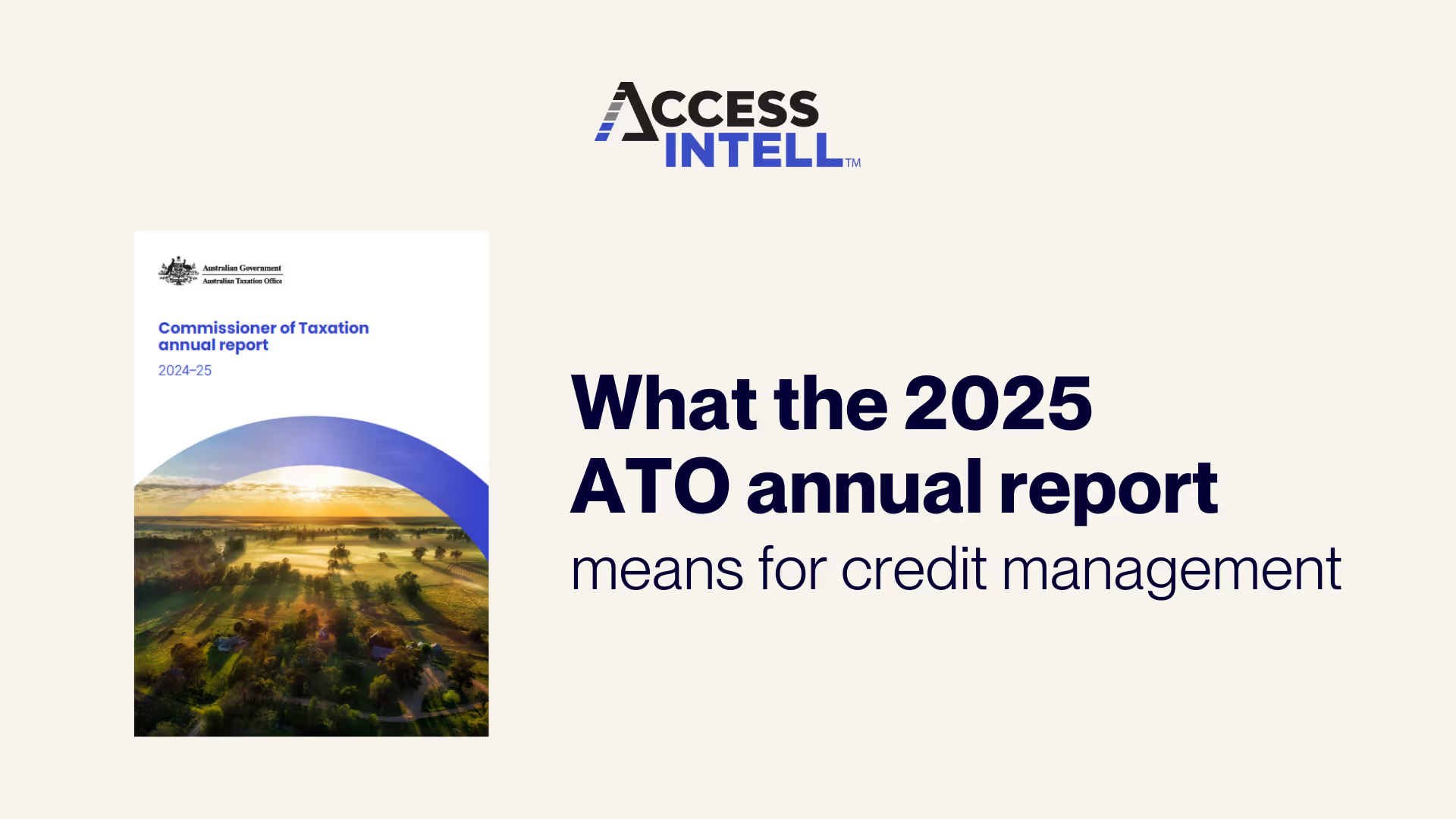Quick Highlights
- Growth of collectable debt has slowed over the past year
- Will “deploy the full powers available” to collect outstanding tax debts
- Payday Super program to target superannuation guarantee compliance
- Digitalised tax experience for small business
- Continued importance of the ATO Disclosure Of Business Tax Debts regime
What Are The Key Activities Of The ATO In 2025-26
Three key ATO activities in the year ahead are of particular relevance to credit risk management; collection, digitalisation and superannuation compliance (ATO 2025-26 Corporate Plan).
Key activity 1 of the ATO corporate plan is “We collect the right amount of tax in accordance with the law in the most efficient way for government and the taxpayer.”
Compliance activities identified include ensuring correct registration, on-time lodgment, accurate reporting and timely payment. Whilst the ATO has committed to effective and timely public advice and guidance, they will also be applying consequences to businesses participating in deliberate non-compliance.
Key activity 2 is to “Deliver fair, secure and transparent taxpayer interactions to make it easy to comply and hard not to.”
A key plank is the acceleration of the “appropriate digitalisation of the tax ecosystem to keep pace with community expectations.” More on this below.
Key activity 3 is to “Manage our responsibilities in the superannuation system to support the future retirement savings of the community.”
The ATO will be focused on employer compliance with superannuation guarantee obligations. A key tool used is to issue a Director Penalty Notice (DPN) to recover overdue tax liabilities by a company personally from current or former company directors (including unpaid Superannuation Guarantee Charge). In 2023-24 8,714 DPNs were issued to individual directors of 6,493 companies, for $572.7 million in unpaid super guarantee, with $483.6 million remaining outstanding (ATO 2023‑24 Annual Report). Additionally the Payday Super program will ensure timely and full superannuation payments alongside regular wages, strengthening the ATO's management of superannuation guarantee obligations (ATO 2025-26 Corporate Plan).
5 Priority Areas For The ATO In 2025-26
In 2025-26 the ATO will focus on five priority areas (ATO 2025-26 Corporate Plan):
- Strengthening payment performance and debt collection
- Enhancing counter fraud measures
- Establishing Payday Super
- Implementing a small business digitalised tax experience
- Delivering our performance evolution
How the ATO is Strengthening payment performance and debt collection
The ATO has seen increased debt levels since 2020 with many businesses having trouble getting on top of their payment obligations (ATO 2025-26 Corporate Plan). Growth of collectable debt has slowed over the last 12 months, which the ATO attributes to:
- increased firmer actions for non-payment
- clear messaging to the community on active collection measures
The ATO has signalled they will continue to build on this in future to prevent future debt.
Businesses choosing not to engage with the ATO will continue to experience firmer actions. The ATO has confirmed the deployment of the full powers available both to collect the debt and as a deterrent to others. Consequences of non-payment include issuing DPNs, garnishee notices and taking wind-up or bankruptcy action.
How the ATO is Implementing a small business digitalised tax experience
The ATO plans to digitalise more aspects of the small business tax experience to address high levels of small business tax debt (ATO 2025-26 Corporate Plan). Two-thirds of the $50 billion in collectable ATO debt is owed by small businesses. Additionally, the ATO will focus on the small business tax gap, of which 40% is driven by:
- honest errors and misunderstandings
- poor record-keeping
- opportunistic behaviour e.g. once-off income omissions and expense exaggerations
The goal is to implement a “streamlined, digitalised tax experience that leverages technological advancement and data-driven insights” to:
- reduce cost and compliance burden
- prevent debt
- provide greater certainty in correctly meeting tax obligations from the start
Why The ATO Disclosure Of Business Tax Debts Is Important For Credit Management
The ATO may disclose overdue business tax debt to approved credit reporting bureaus (including Access Intell) if a business meets certain criteria. In the 2023-24 financial year the ATO disclosed over 36,000 business tax debts (ATO 2023‑24 Annual Report).
Visibility of overdue tax debts helps businesses to make more informed decisions about who to trade with and whether to extend trade credit.
Businesses able to access tax debt information receive early warning of possible distress in the defaulting customer. This allows them to manage their risk exposure and proactively work with affected customers.
Clients that use our online trade application and assessment and credit risk monitoring products have instant access to this vital information both within the platform and via email alerts.
Key Takeaways For Creditors
The ATO’s post-Covid return to business-as-usual collection activities, and firmer use of collection tools provides important context for managing credit risk.
The ATO Disclosure of Business Debts regime continues to provide critical red flag alerts for managing risk. Learn more in our article A credit management guide to ATO Disclosure of Business Debts tax information. It explains:
- what tax default information is
- why it’s important to know when extending trade credit
- how director penalty notices (DPNs) relate
- where to access this information to proactively manage your business’s financial risk
Read the full ATO corporate plan here.



